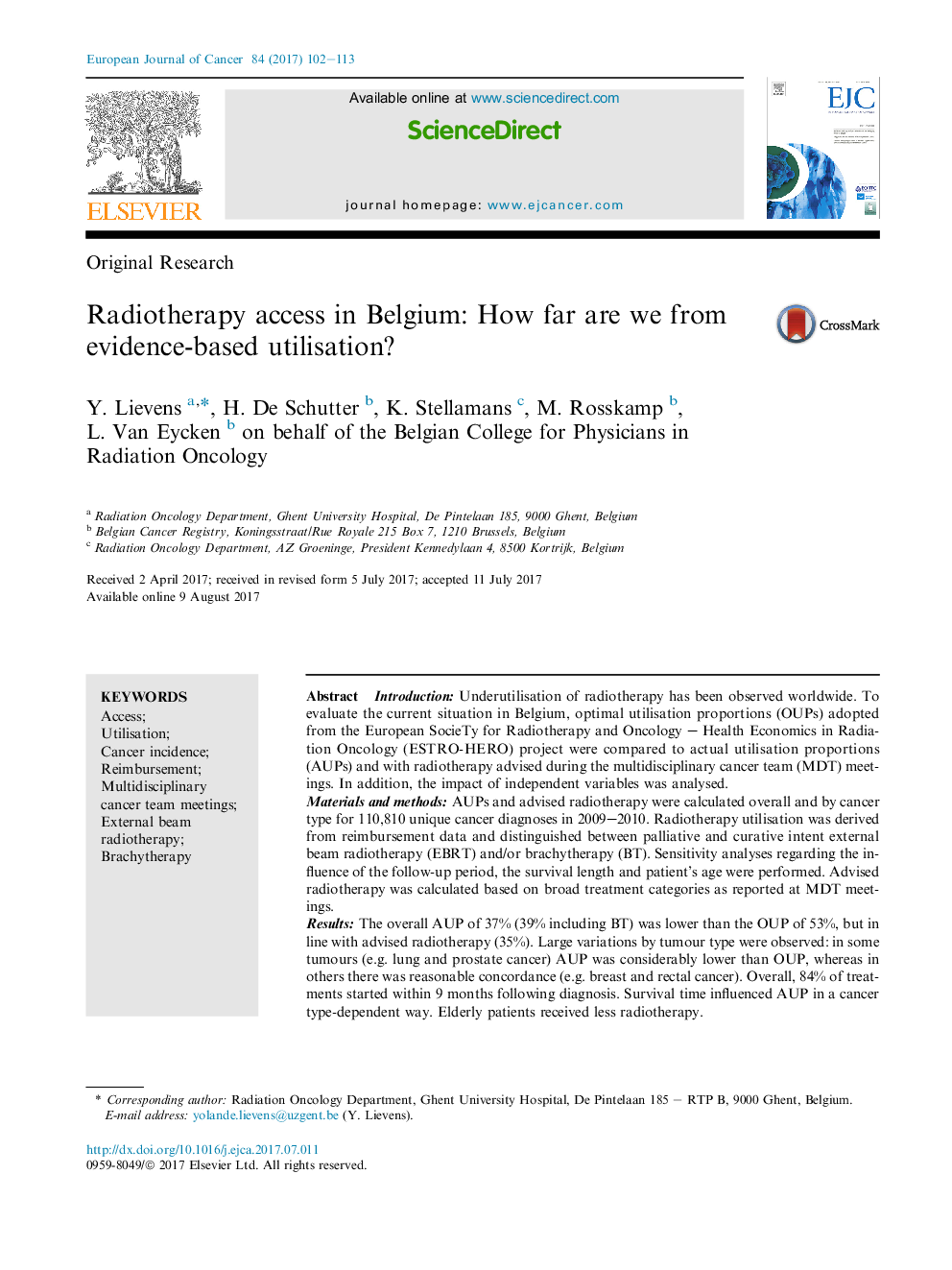| Article ID | Journal | Published Year | Pages | File Type |
|---|---|---|---|---|
| 5526203 | European Journal of Cancer | 2017 | 12 Pages |
â¢Based on evidence-based guidelines, half of all cancer patients need radiotherapy.â¢Cancer Registry and reimbursement data defined actual and advised radiotherapy.â¢Compared to the guidelines, radiotherapy is underutilised in Belgium.â¢Patient and tumour characteristics influence the gap between optimal and actual.â¢Actual practice aligns to advices given at multidisciplinary cancer team (MDT) meetings.
IntroductionUnderutilisation of radiotherapy has been observed worldwide. To evaluate the current situation in Belgium, optimal utilisation proportions (OUPs) adopted from the European SocieTy for Radiotherapy and Oncology - Health Economics in Radiation Oncology (ESTRO-HERO) project were compared to actual utilisation proportions (AUPs) and with radiotherapy advised during the multidisciplinary cancer team (MDT) meetings. In addition, the impact of independent variables was analysed.Materials and methodsAUPs and advised radiotherapy were calculated overall and by cancer type for 110,810 unique cancer diagnoses in 2009-2010. Radiotherapy utilisation was derived from reimbursement data and distinguished between palliative and curative intent external beam radiotherapy (EBRT) and/or brachytherapy (BT). Sensitivity analyses regarding the influence of the follow-up period, the survival length and patient's age were performed. Advised radiotherapy was calculated based on broad treatment categories as reported at MDT meetings.ResultsThe overall AUP of 37% (39% including BT) was lower than the OUP of 53%, but in line with advised radiotherapy (35%). Large variations by tumour type were observed: in some tumours (e.g. lung and prostate cancer) AUP was considerably lower than OUP, whereas in others there was reasonable concordance (e.g. breast and rectal cancer). Overall, 84% of treatments started within 9 months following diagnosis. Survival time influenced AUP in a cancer type-dependent way. Elderly patients received less radiotherapy.ConclusionAlthough the actually delivered radiotherapy in Belgium aligns well to MDT advices, it is lower than the evidence-based optimum. Further analysis of potential barriers is needed for radiotherapy forecasting and planning, and in order to promote adequate access to radiotherapy.
